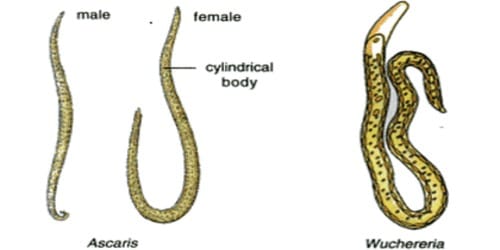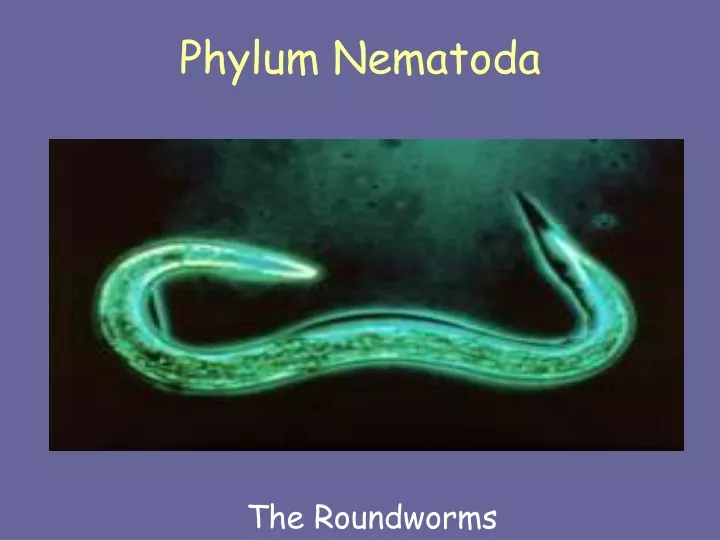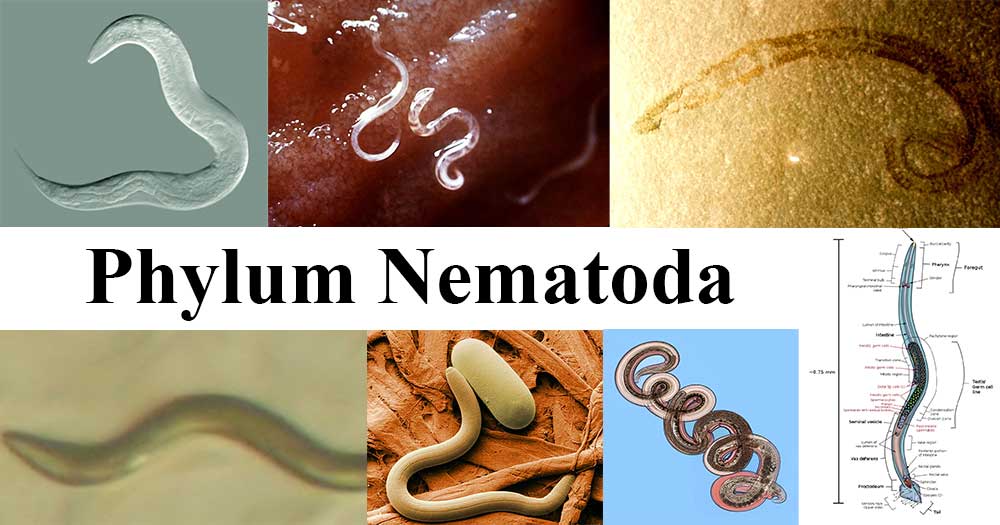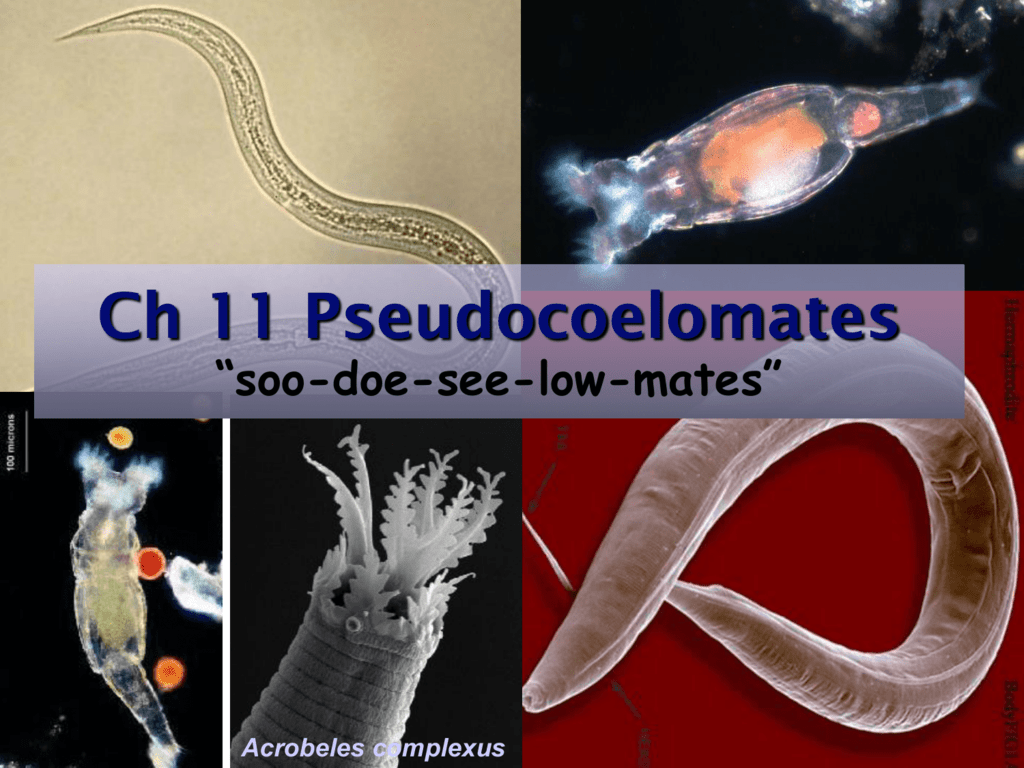Animals With Cylindrical Body Pseudocoelom Complete Gut Belongs To Which Phylum
20159 2 ectoderm à skin nervous system mesoderm à muscles bones circ sys endoderm à dig and resp tracts pseudocoelomates. They have a body cavity but it is not lined with mesodermal cells.

Campbell Chapters 33 34 Kingdom Animalia Animals Ppt Download
Individuals are pseudocoelomate and mostly unsegmented and are covered with a cuticle.

Animals with cylindrical body pseudocoelom complete gut belongs to which phylum. 2 major kinds of body cavities. The body of these organisms is unsegmented and triploblastic. _____ -- A heterogeneous phylum of small to microscopic wormlike animals.
Pseudocoelomate animals have a pseudocoelom. Sensory organs like antenna eyes and balance organs are present. Roundworms nematodes phylum Nematoda Cylindrical worms with a pseudocoelom.
Except in parasitic _____ the digestive tract is complete from mouth to pharynx to intestines to anus. Caenorhabditis elegans a type of. First animal to posses a body cavity Pseudocoelom Distinct body cavity with no peritoneal lining and mesenteries.
Characteristic features of Phylum Aschelminthes. Acoelomate animals are called acoelomates and they have no true body cavity. Some roundworms are parasitic.
Same number of cells for each animal and for each given organ Ex. Visceral Internal organs lie free in the cavity. The radially symmetrical diploblastic animals belong to the phylum a Porifera b Coelenterata c Platyhelminthes d Echinodermata.
Ascaris belong to the phylum Nematoda of super phylum Aschelminthes. Secrete mucus and move by means of cilia and wave-like muscle contractions A thin body between dorsal and ventral surfaces NO coelom acoelomate Flatworms trematodes tapeworms Photo from. Trilobitomorpha Trilobites Chelicerata Crustacea Myriapoda and Hexapoda.
Pseudocoelom and true coelom both have. Pseudocoelomates include phylums Nematoda and Rotifera. Tubular digestive system excretory organs and a nervous system but no circulatory or respiratory organs.
Which are further divided into classes. Pseudocoelomateanimals such as roundworms have a body cavity but it does notdevelop from splitting of. The nymph goes through a series of molts each time looking more like and adult until it reaches full size.
The body is cylindrical or thread like with elongated slender worm-like appearance and tapering at both ends. The members of this group have very diverse ecologies. Coelomates include phylums Mollusca Annelida Arthropoda.
Phylum Platyhelminthes flat worms first phyum with organ-system level of organization and bilateral symmetry with some cephalization gastrovascular cavity. They have a cylindrical body without showing any metamerism a pseudocoel false coelom and a complete digestive tract lined by endodermal epithelium. This extremely diverse phylum includes some highly beneficial free-living soil worms as well as some notorious pests and parasites.
Animals having cylindrical body having an organ system level of organization showing metamerism belongs to phylum a Arthropoda b Mollusca c Annelida d Platyhelminthes. Body wall is lined with mesodermal tissue ie. Arthropods are traditionally divided into 5 subphyla.
They have a pseudocoeloem where the body cavity is not lined by the mesodermal layer. The fluid-filled pseudocoelom of these animals can function as a hydrostatic skeleton which can be useful in drilling through soil or a hosts body tissue. The acoelomate phyla are Placozoa Porifera Cnidaria Ctenophora Platyhelminthes Mesozoa Nemertina Gnathostomulida.
Body Cavity and Development. Most phylums contain a complete tubular digestive tract Aschelminths Eutely. Acoelomates include phylum Platyhelminthes.
The cuticle covering the body surface bears minute transverse striations giving a pseudosegmented appearance to the worm. Acoelomateanimals like flatworms and flukes shown in Figure 4 do not have acoelomor body cavity produced during preadult development. Cuticle periodically molts sheds and replaces as they grow.
They are bilaterally symmetric. Three embryonic tissue layers. A type of development in certain insects such as grasshoppers in which the young called nymphs resemble adults but are smaller and have different body proportions.
Phylum Nematoda And Other Pseudocoelomate Animals Phylum Nematoda

Ch 11 Pseudocoelomates Soodoeseelowmates Acrobeles Complexus Pseudocoelomates Aschelminthes

Describe On Phylum Aschelminthes Qs Study

Phylum Nematoda And Other Pseudocoelomate Animals Phylum Nematoda

Phylum Nematoda And Other Pseudocoelomate Animals Phylum Nematoda

Ppt Phylum Nematoda Powerpoint Presentation Free Download Id 9559184
Classification Of Kingdom Animalia Features Basis And More

Phylum Nematoda And Other Pseudocoelomate Animals Phylum Nematoda

Phylum Nematoda Characteristics Classification Examples

Difference Between Nematoda And Annelida Pediaa Com Different Complete Digestive System Annelid

Posting Komentar untuk "Animals With Cylindrical Body Pseudocoelom Complete Gut Belongs To Which Phylum"